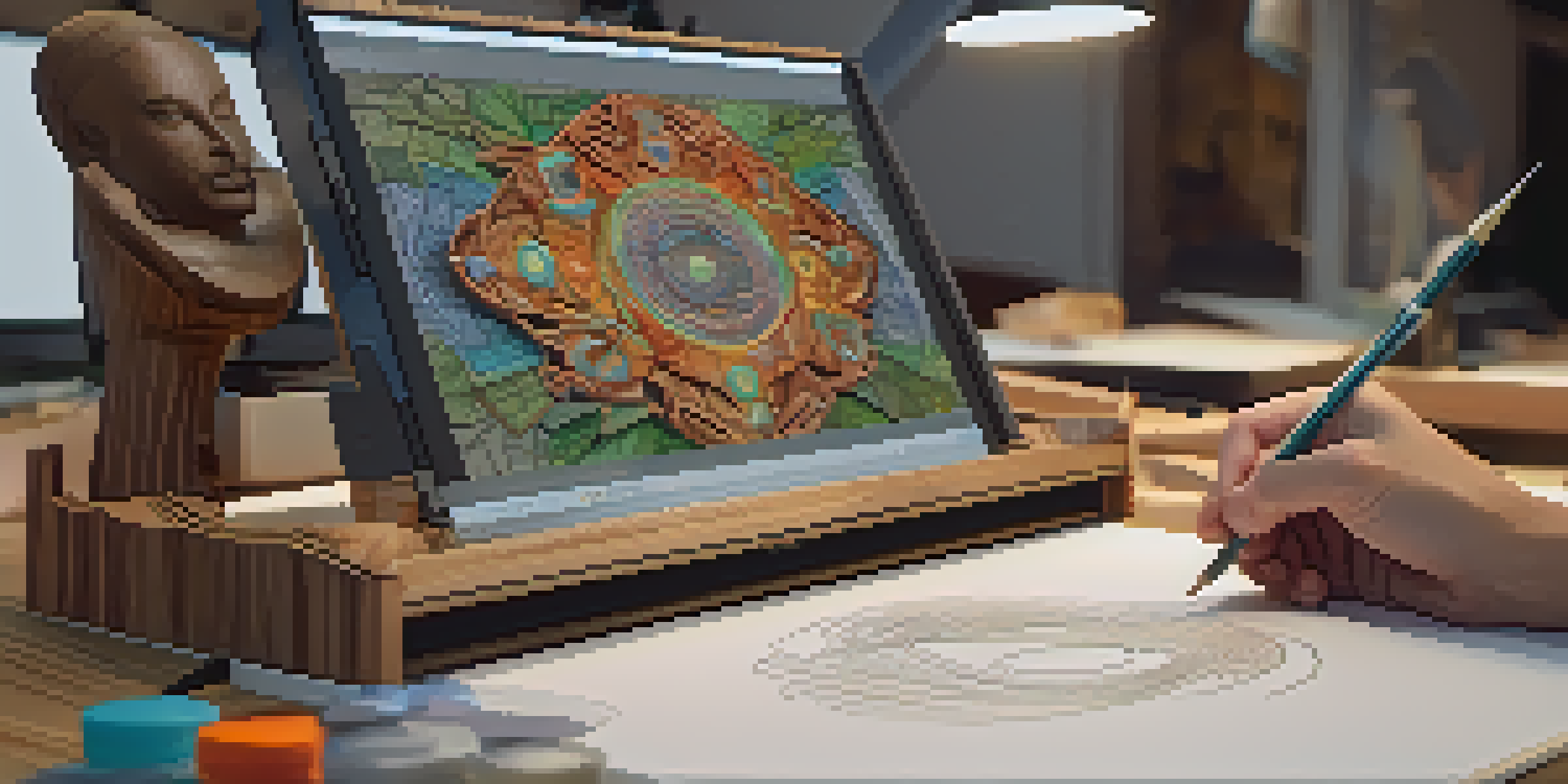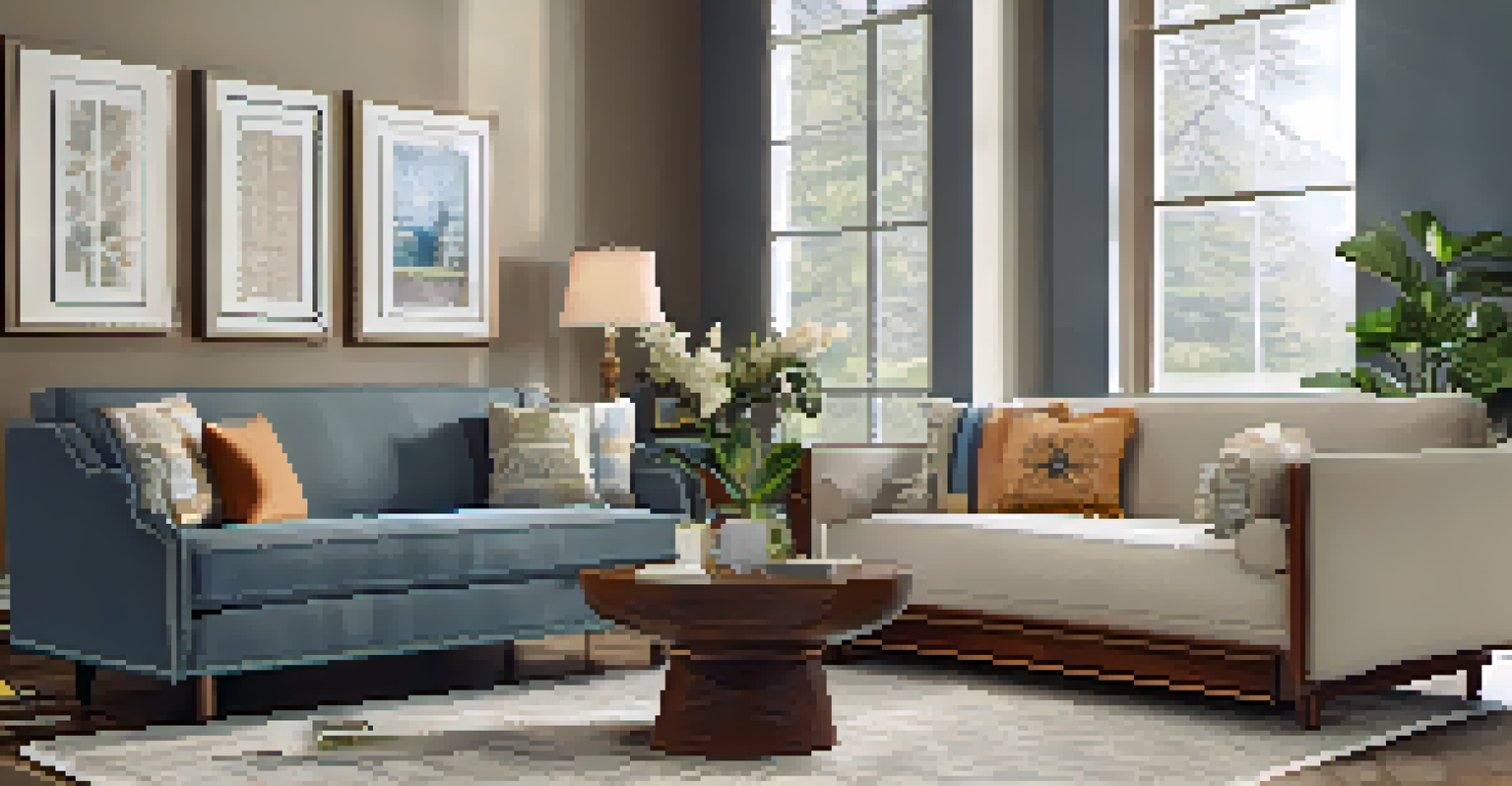The Role of CAD in the Future of Carving Techniques

Understanding CAD and Its Basics in Carving
Computer-Aided Design (CAD) is a technology that helps designers create precise drawings and models. In the realm of carving, it allows artisans to visualize their work in a 3D space before any physical material is touched. This technology has revolutionized traditional techniques, providing a digital canvas where ideas can come to life.
Design is not just what it looks like and feels like. Design is how it works.
Consider a sculptor who wants to carve a statue; with CAD, they can experiment with shapes and sizes without the risk of wasting materials. It’s like having a virtual playground where creativity knows no bounds. This means that errors can be easily corrected before the actual carving begins, saving time and resources.
The integration of CAD into carving techniques not only enhances creativity but also significantly increases efficiency. By streamlining the design process, artisans can focus more on the artistry rather than the logistics of carving, paving the way for innovative creations.
How CAD Enhances Precision in Carving Techniques
One of the most significant advantages of CAD in carving is the unmatched precision it offers. Traditional methods can be prone to human error, but CAD allows for meticulous measurements and adjustments, resulting in flawless outcomes. This precision is crucial, especially in industries like automotive design, where even the slightest miscalculation can lead to major issues.

For example, when designing intricate patterns on wood or stone, CAD enables artisans to create detailed blueprints that can be followed exactly. This level of detail ensures that the final product aligns perfectly with the original vision, eliminating discrepancies. As a result, the quality of carved items has improved remarkably.
CAD Enhances Precision in Carving
Computer-Aided Design (CAD) allows for meticulous measurements and adjustments, ensuring flawless outcomes in carving projects.
Furthermore, CAD software often includes simulation tools that predict how materials will respond to different carving techniques. This predictive capability helps artists make informed decisions, ensuring that their creations stand the test of time.
The Role of CAD in Customization and Personalization
Customization is increasingly becoming a demand in various industries, and CAD plays a vital role in this trend. With the help of CAD, artisans can easily adapt their designs to meet individual client specifications. Imagine a customer wanting a unique design for a piece of furniture; CAD allows for quick adjustments until the perfect design is achieved.
Creativity is thinking up new things. Innovation is doing new things.
This level of personalization not only satisfies clients but also fosters a deeper connection between the artist and their work. When customers see their ideas come to life through CAD designs, it creates a sense of ownership and collaboration. This engagement can lead to repeat business and referrals.
Moreover, CAD tools streamline the modification process, making it easier to create multiple variations of a design. Whether it’s altering dimensions or experimenting with different patterns, CAD provides the flexibility needed to meet diverse customer preferences.
Integrating CNC Technology with CAD for Efficient Carving
The combination of CAD and CNC (Computer Numerical Control) technology is a game-changer in the carving world. CNC machines can follow CAD designs with incredible accuracy, automating the carving process and increasing productivity. This integration allows artisans to produce complex designs that would be extremely time-consuming to create by hand.
For instance, when creating intricate wooden carvings, a CNC machine can replicate the designs created in CAD with precision, ensuring consistency across multiple pieces. This means that artisans can fulfill larger orders without compromising on quality. It’s like having an extra pair of skilled hands that never tire.
Customization through CAD Technology
CAD facilitates easy design adaptations to meet individual client specifications, fostering a deeper connection between artists and customers.
Additionally, CNC technology can work with various materials, from wood to metal, expanding the horizons of what can be carved. This versatility opens up new possibilities for artists, allowing them to experiment with innovative designs that were previously unimaginable.
The Impact of CAD on Training New Carving Artists
As CAD technology continues to reshape the carving landscape, it also influences how new artists are trained. Traditional carving methods are still valuable, but incorporating CAD into training programs equips emerging artists with essential skills for the future. Understanding CAD software can be a significant advantage in today’s competitive market.
For example, art schools are increasingly offering courses that blend traditional techniques with modern technology. Students learn how to create designs digitally, which they can then bring to life through carving. This hybrid approach not only enhances their skillset but also prepares them for careers where both artistry and technology coexist.
Moreover, CAD software often includes tutorials and resources that help beginners grasp the fundamentals quickly. This accessibility makes it easier for aspiring artists to experiment and innovate, fostering a new generation of talented carvers who are comfortable with both hands-on and digital techniques.
Sustainability in Carving Through CAD Innovations
Sustainability is a crucial consideration in today’s crafting processes, and CAD can significantly contribute to eco-friendly carving techniques. By optimizing designs and reducing material waste, CAD helps artisans create more sustainable products. For instance, precise measurements ensure that every cut is efficient, minimizing leftover materials.
Additionally, CAD allows for the simulation of different materials and their environmental impacts. Artists can experiment with sustainable alternatives in their designs, ensuring that their creations are not only beautiful but also environmentally responsible. This consideration is increasingly important to consumers who prioritize eco-friendly products.
Sustainability in Carving Practices
By optimizing designs and reducing material waste, CAD contributes significantly to eco-friendly carving techniques.
As a result, artisans who adopt CAD technology can appeal to a broader audience that values sustainability. This not only enhances their brand image but also supports a greater movement towards responsible crafting practices.
The Future: Trends Shaping CAD and Carving Techniques
Looking ahead, several trends are emerging that will further influence the role of CAD in carving techniques. One notable trend is the increasing use of augmented reality (AR) in the design process. With AR, artists can visualize their designs in real-world settings before carving, making adjustments based on how the piece will actually look in its intended environment.
Another trend is the rise of collaborative platforms, where multiple artists can work on a single CAD project in real-time. This collaborative approach fosters creativity and innovation, allowing for a blend of ideas from different perspectives. Think of it as a digital studio where artists can brainstorm and refine their designs together, no matter where they are located.

As technology continues to advance, the future of carving techniques looks bright. With CAD at the forefront, artists will have the tools to push creative boundaries, embrace sustainability, and produce work that resonates with a diverse audience.